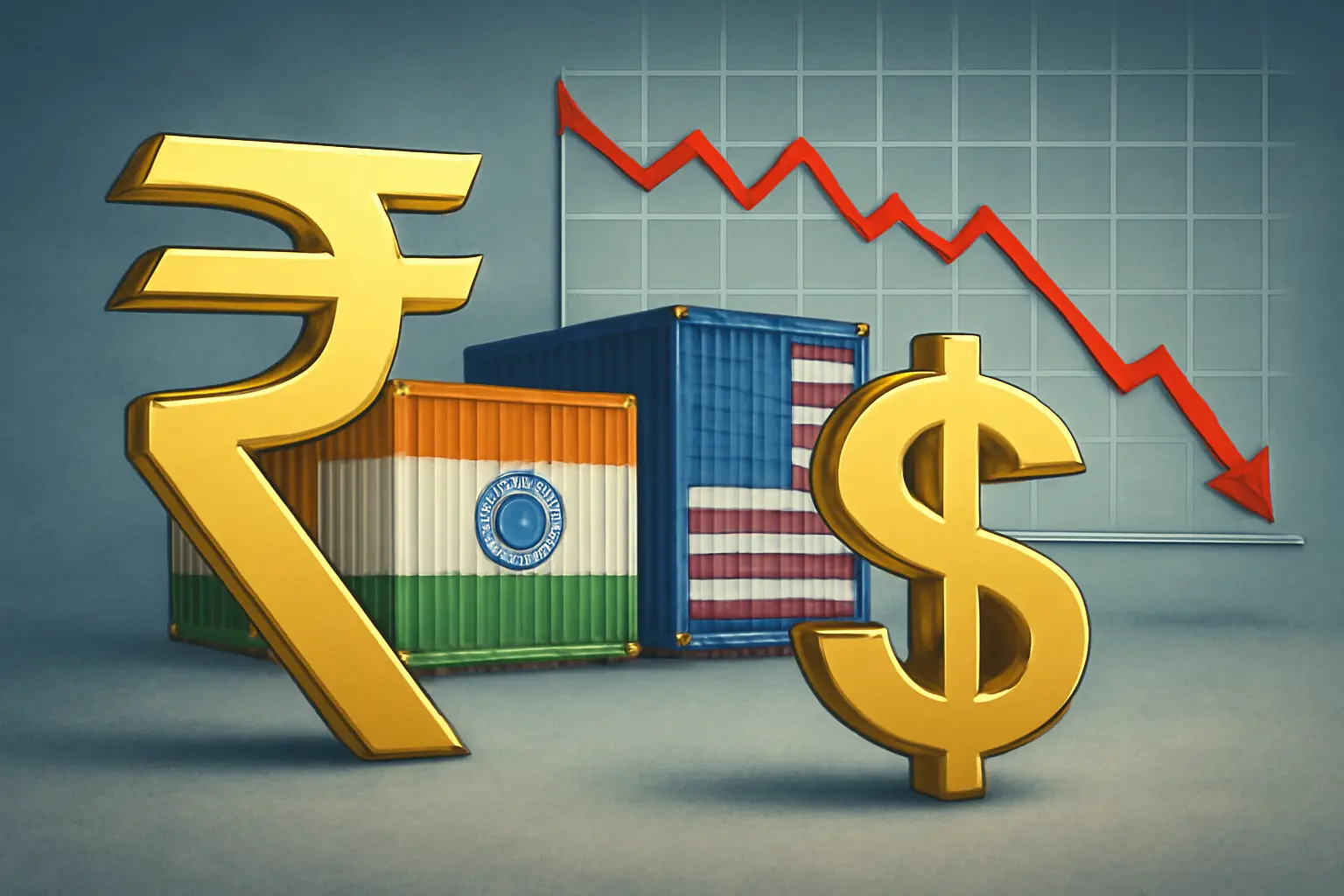
In a stunning escalation of trade tensions, President Donald Trump has announced a blanket 25% tariff on all Indian imports to the US effective August 1, 2025. Beyond headlines, this move rocks Indian exporters, global investors, and everyday savers. How will it reshape India’s markets, jobs, the rupee, and your own investments? This comprehensive guide decodes the winners, losers, and smart money strategies for the coming high-volatility months.
Which Sectors Are Hit Hardest?
-
Gems and Jewellery: Nearly 30% of exports go to the US. A 25% tariff means serious risk to jobs, manufacturing, and India’s $10B annual trade in this sector.
-
Textiles & Apparel: With the US as the #1 destination (28% of exports), India loses price parity against cheaper rivals like Vietnam and Bangladesh.
-
Electronics and Auto Components: Higher tariffs push costs up, crimping India’s share in the US supply chain and putting Indian manufacturers on the back foot.
-
Pharma: Presently exempted, so India retains a competitive edge here—for now.
-
Steel & Aluminium: Face ongoing tariffs on top of the new 25%, further straining large and small manufacturers.
-
Agriculture & Marine Exports: Shrimp, fish, rice, and more now face a 26% levy—potentially reducing demand and hurting farmers and processors.
How Indian Markets Reacted — And What’s Next?
-
On tariff announcement, Sensex tumbled 500 points and the Nifty fell sharply. The rupee weakened beyond 85.6 to the dollar as foreign investors pulled back.
-
Export-heavy stocks—especially IT, auto, and textiles—plunged as revenue forecasts were slashed.
-
Experts predict that a prolonged tariff regime could shave 0.1–0.2% off India’s GDP growth—not catastrophic but significant if compounded by global slowdowns.
Despite short-term pain, Indian equities are holding better than some peers, with domestic consumption, banking, and infrastructure stocks offering resilience.
Why Are Tariffs This High?
-
The US cites “reciprocity,” matching India’s allegedly high duties on American products—and negotiating leverage for a better bilateral trade deal.
-
India faces higher tariff rates (25%) than competitors like the UK (10%) and EU (15%), and just below China (30%), undermining its export competitiveness in key sectors.
-
The move is also a US response to India’s oil imports from Russia—adding another layer to ongoing diplomacy.
Impact on Jobs, Inflation, and the Rupee
-
Thousands of jobs—particularly in labour-intensive sectors like textiles and gems—are at risk as orders slow and margins shrink.
-
If Indian exports slide, the trade deficit widens, pressuring the rupee and making imports (especially fuel) more expensive, stoking inflation.
-
Reduced dollar inflows may trigger FPI outflows, adding to volatility in the equity and bond markets.
How Will This Affect Your SIPs, Mutual Funds, and Stock Portfolio?
-
Mutual Funds: Schemes with high export sector weights (IT, pharma, auto, textiles) may see near-term underperformance. Diversified or India-focused funds with a tilt towards domestic consumption are better positioned, but monitor sector reallocations closely.
-
Stocks: Export-heavy companies could trend down. Domestic-focused blue chips and infrastructure names may offer a buffer.
-
Asset Allocation: Volatility is expected to rise. Historically, such shocks have been buying opportunities for long-term investors—but caution and staggered entries are advised.
For strategies on how to rebalance your SIP or mutual fund portfolio during turbulent times, read our in-depth post:
How to Rebalance Your Mutual Fund Portfolio During Market Volatility
What Smart Investors Should Do Now?
-
Don’t Panic Sell: Markets often overreact short-term; institutional buying may stabilize strong fundamentals.
-
Rebalance & Diversify: Shift some investments towards domestic demand plays, banking, and defensive sectors as a hedge.
-
Watch Policy Updates: The trade war is fluid. New deals or diplomacy could quickly change sector outcomes.
-
Track the Rupee: Importers, NRIs, and those repaying foreign loans must closely monitor INR/USD movements.
-
Look for Long-Term Value: Periods of volatility often create buying opportunities, but only for those with a 3–5 year investment horizon.
🔗 Frequently Asked Questions
Q1: Will this end the India-US trade relationship?
No, but it raises the stakes for a speedy trade pact and could cause months of tension.
Q2: Will my exports be affected if I’m in IT or pharma?
IT may see some turbulence; pharma is largely exempt (as of now) but should watch for policy changes.
Q3: Is the Indian economy at serious risk?
Short term—some pain and volatility (especially export jobs and stocks). Long term—India is more insulated since exports to the US are a small share of GDP (about 2%), and strong domestic demand provides a cushion.
Q4: Will my mutual funds lose money?
Only if heavily skewed to affected sectors. Broader diversification lessens the impact.
🔗 Further Reading
-
Understanding UPI Rules And Digital Finance Safety:
New UPI Rules from August 2025: What You Need to Know -
Best SIP and Mutual Fund Picks for 2025: Avoid Tariff Shock:
Complete Guide to Mutual Funds in India 2025
Disclaimer: Markets change fast. For the latest perspectives or for personalized strategies, consult a SEBI-registered financial advisor.